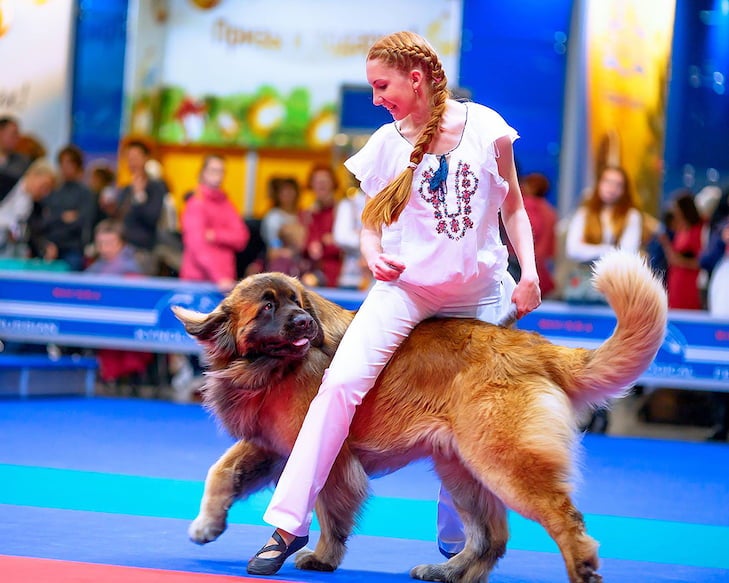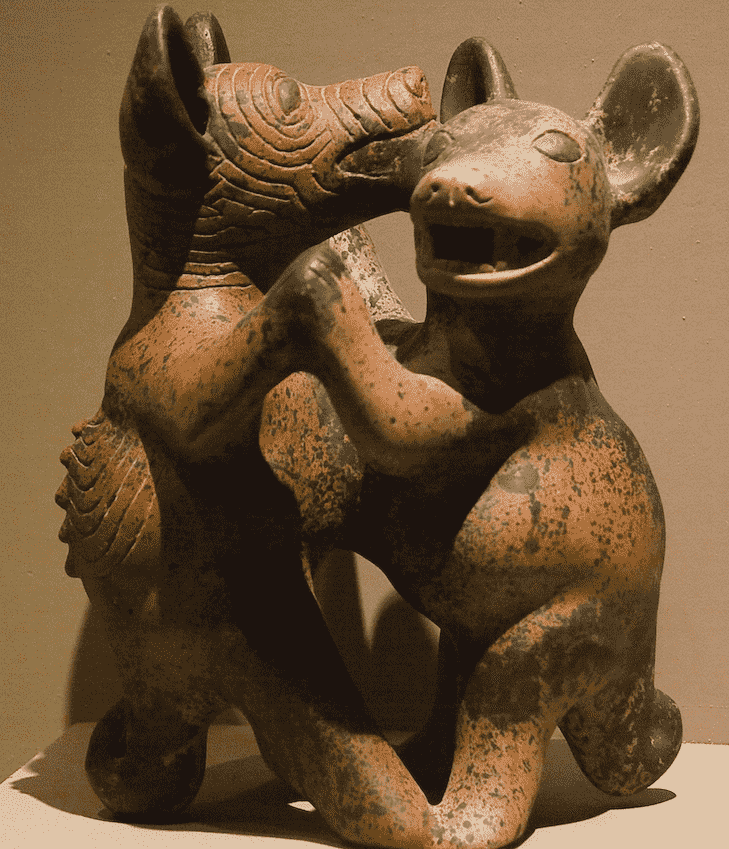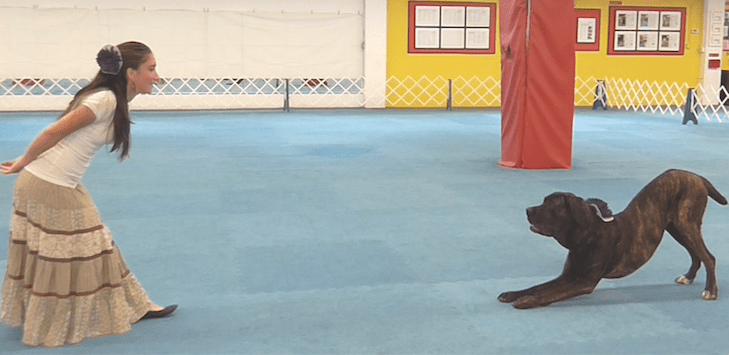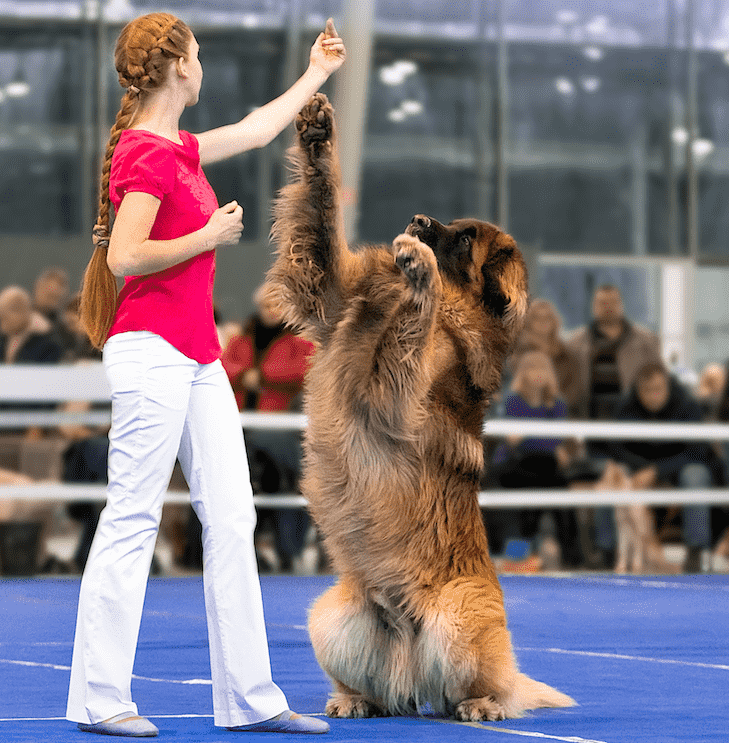
|
In 2013, Zandra Brown took in a 5 1/2 –year-old Keeshond, Lily, who had been given up by her first owners. Lily was already having a hard time adjusting to a new home, when, just five months later, she was diagnosed with cancer. Radiation treatments put the disease into remission but sapped her endurance.
“I wanted to find something Lily could love doing,” Brown recalls.
It seemed an impossible task. The tried-and-true mood lifter, agility, which her other Keeshonden loved, was not an option. In addition to her physical limitations, Lily was terrified of stairs, ramps, strangers, and toys.
Eventually, she learned of a group called the ScentSations at her local training facility in Maryland. The group’s specialty is musical freestyle, better known to the public as doggie dancing. It turned out to be the perfect solution for Lily.

In musical freestyle, the owner chooses the movements and the music. Brown played to Lily’s strengths, such as her desire to heel, as well as tricks like weaving, and “paw work.” As for music, the mellow beats of Bob Marley were ideal for Lily’s speed. Soon enough, Lily was earning ribbons as a dancer.
From Aztec Tombs to British Telly
Many first glimpsed this sport in 2012, when Ashleigh Jade Butler and Pudsy, a shaggy white-mixed breed with an impressive array of tricks, performed on Britain’s Got Talent, stunning TV’s king of snark, Simon Cowell.
“You know me, I love a dancing dog,” Cowell said. “And Pudsey’s one of the best dancing dogs I’ve ever seen.”
The modern era of musical freestyle got started in the late 1980s, but there are signs that the idea of dancing dogs goes back to antiquity. In fact, they were depicted in a famous piece of Pre-Columbian art retrieved from Aztec tombs. Later, musical trick dog acts were favorite attractions for street, circus, and vaudeville performers. The 1941 movie musical Lady Be Good features a lovely tap-dance routine performed by Eleanor Powell and a Russell Terrier.
The activity started to catch on in the dog world in the 1980s, some years after obedience and agility became popular. Several trainers came up with the idea of setting basic obedience moves, like heeling, to music.
Patie Ventre, a former competitive figure skater and ballroom dancer, founded the World Canine Freestyle Organization (WCFO) in 1999. All kinds of characters played early roles, from a teacher who did pattycake with her dogs on a tennis court, to a figure skater whose dog worked alongside him as he practiced moves.

Ventre pinpoints the real start at 1989 when a Canadian trainer and her Border Collie performed at a seminar and later founded the first formal organization. In 1993, Mary Ray first performed at the iconic Crufts Dog Show. Soon “heelwork to music” became a feature of the competition.
In 2006, a viral video helped to jumpstart musical freestyle for a new generation of young trainers. Jenn Michaelis was one of them. She was living in Montana when someone sent her the clip, featuring a woman and her Golden Retriever dancing to the song “You’re the One That I Want” from Grease.
“That video left me in absolute tears,” Michaelis recalls.
The intricacy of the choreography impressed her. The dancing dog twirled, pranced backward in circles, quickstepped sideways, and slipped in tail-wagging figure eights between his owner’s legs. But what left Michaelis “completely blown away” had nothing to do with steps.
“It was the joy between those two,” she says. “What a beautiful way to celebrate the bond that they have.”
She started working with the only canine partner she had at the time, Sassy, her 15-year-old Pomeranian. Michaelis pulled together easy routines that Sassy could master, based mostly on spins and weaves.
Today, Michaelis is a musical freestyle competitor with her Cane Corso, Terra, and her Chinese Crested, Ringo.

Obedience + Music = Magic
Is a terrier tango or Whippet waltz in your future? Many people admire dancing dogs when they see them, but then can’t figure out how to take the next step.
“The first time I saw a dog dancing was at a conference. A Border Collie named Pepper joined his owner in the Macarena. I was astounded, and while it looked like magic, teaching a dog to dance involves the basic behavioral principles of shaping and chaining,” says Mary Burch, director of the AKC Family Dog program.
Natalia Rubleva, a Moscow-based trainer and top European competitor, says that she was bored with obedience, and wanted something more interesting and fun. Five years ago, she started setting obedience routines to music.
The first step, Rubleva says, is to set down a solid foundation in obedience and tricks. Then you pick music that you like, making sure it’s appropriate for the dog’s size and movement. Rubleva has competed with all kinds of dogs, including a Leonberger, Great Pyrenees, and Nova Scotia Duck Tolling Retriever.
Once the dog masters the moves, the next step is to teach the dog to perform them in a sequence, which in training lingo is known as “chaining,” and to a beat.
“Training dogs to compete in dancing is a rather complicated, long, and very interesting process,” the young Russian champion explains. She adds that, in her experience, nothing else forges as strong a bond between a person and a dog.
That’s something that Brown has seen with Lily. After about two and a half years of dancing, Lily has come into her own. She merrily greets people and is much more confident, even around things that used to scare her. Brown attributes it all to freestyle.

You Can Dance If You Want To
“People who don’t want to try dancing with their dogs have a variety of reasons,” says Burch. “Some never learned to dance, and some have some body image problems, or feel uncoordinated.”
There are a lot of reasons people cite for not even trying this activity. However, many are based on misconceptions, like:
I have two left feet.
“If you can walk forward in a straight line you can do freestyle,” says Michaelis.
You don’t have to be Fred Astaire. All kinds of people, including the elderly and those in wheelchairs, participate and compete.
My dog is not a Border Collie.
Yes, brilliant, energetic herding dogs excel, but all breeds can learn moves that can be turned into a dance. A dog mightn’t be able to leap through your arms, but easier moves can be pulled together into a nice routine.
Choreography? Not for me!
Don’t think of it as choreography, but as heeling and tricks, set to music. The challenge, and the fun, is stringing them together and moving to the beat.
I’d look terrible in sequined tap pants.
So, don’t wear them. For many freestyle competitors, costumes and props are half the fun. But if dressing up isn’t your thing, you don’t have to. Freestyle should focus on the dog.
There are no classes anywhere.
Classes may be hard to come by, but practicing freestyle requires just you, the dog, and the music. Many serious competitors say that they’ve taught big dogs to dance in tiny apartments.
So, the next time you find yourself mesmerized by a dog and owner pulling off some top-notch canine choreography, remember that entering the world of musical freestyle is an option open to dogs and owners of all sorts. And when you get the choice to sit it out or dance, I hope you dance.
This article first appeared in the March/April 2016 issue of AKC Family Dog magazine.



